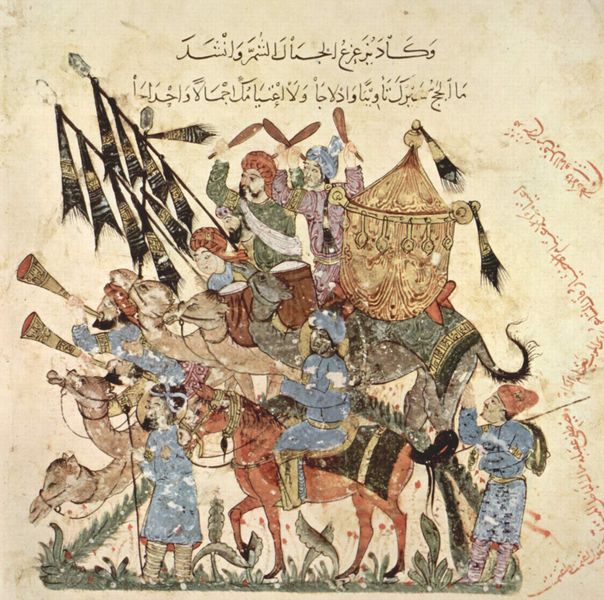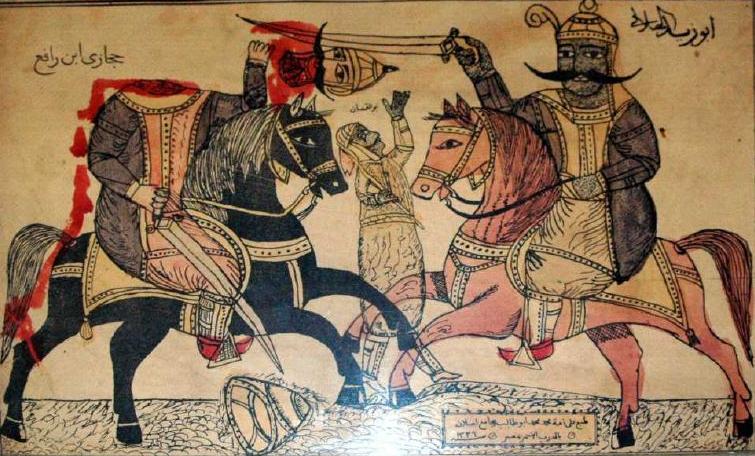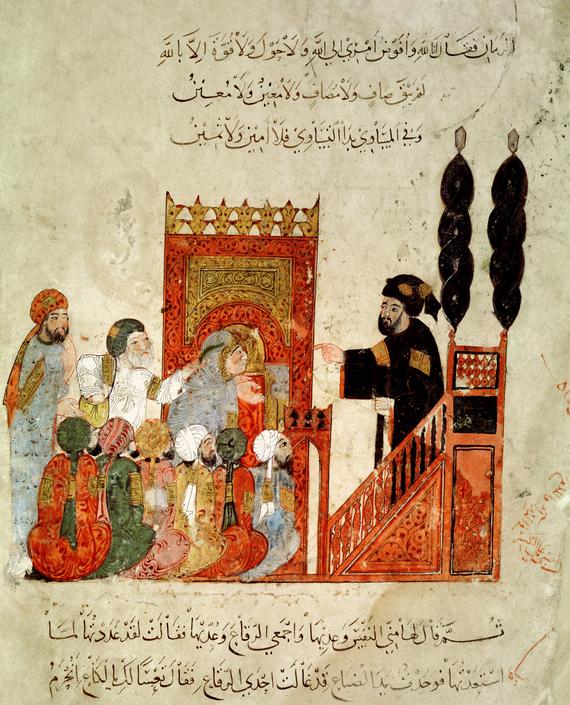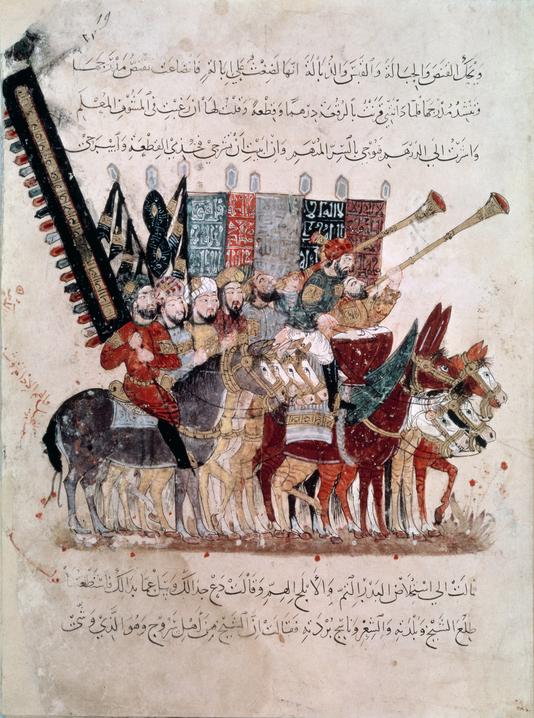Over six centuries ago, the Islamic world saw itself as the unquestioned pinnacle of civilization. What was it really like? The answer is in the diaries of one Ibn Battuta.
One day in the Moslem year 756, 1355 in our chronology, a well known Moslem theologian began to dictate his memoirs. He was Abu Abdullah Mohammed, better known by his patronymic Ibn Batuta, and he was fifty-one years old. Though he was a scholar and distinguished judge, he was known chiefly as a traveler. He was not well traveled merely by Moroccan standards, he was the best traveled man on earth. By sea and land, by camel, on foot, and on horseback, he traveled at least 75,000 miles, a total probably never equaled until modern times. He was unique. He, and probably he alone among all the men of his age, had visited every civilized country there was.

It had been six hundred years since the Arabs, bursting from their desert heartlands, had carried their austere and warlike faith across the continents; by the fourteenth century the great Islamic empire of the Caliphs was no more, having split into a multitude of sultanates, emirates, and squabbling principalities. It remained, nevertheless, if not a political, at least a cultural entity. Image:Wiki
Civilization, of course, lies in the eye of the beholder. To the Sultan Abu Inan Faris, to Ibn Batutta himself, and to any educated citizen of fourteenth-century Morocco, civilization was conterminous with Islam.Compared with Islam, Christianity, Buddhism, and Hinduism were impotent. Islam had survived the weakening of its political authority and remained one of the great power factors of the world.
( see link at end) …Here we crossed the Nile and, hiring camels, journeyed with a party of Arabs through a desert, totally devoid of settlements but quite safe for travelling. One of our halts was at Humaythira, a place infested with hyenas. All night long we kept driving them away, and indeed one got at my baggage, tore open one of the sacks, pulled out a bag of dates, and made off with it. We found the bag next morning, torn to pieces and with most of the contents eaten. After fifteen days’ travelling we reached the town of Aydhab, a large town, well supplied with milk and fish; dates and grain are imported from Upper Egypt. Its inhabitants are Bejas. These people are black-skinned; they wrap themselves in yellow blankets and tie headbands about a fingerbreadth wide round their heads. They do not give their daughters any share in their inheritance. They live on camels milk and they ride on Meharis [dromedaries]. One-third of the city belongs to the Sultan of Egypt and two-thirds to the King of the Bejas, who is called al-Hudrubi. On reaching Aydhab we found that al-Hudrubi was engaged in warfare with the Turks [i.e. the troops of the Sultan of Egypt], that he had sunk the ships and that the Turks had fled before him. It was impossible for us to attempt the sea-crossing [across the Red Sea], so we sold the provisions that we had made ready for it, and returned to Qus with the Arabs from whom we had hired the camels. …

Abu Zayd. Hero of the Maqamat, a collection of tales written in the twelfth century. It mirrors a world of islam virtually identical to the one Ibn Batuta was later to describe. Image Wiki:http://en.wikipedia.org/wiki/File:Abu_Zayd_al-Hilali.jpg
…On the road to Jerusalem: Hebron and Bethlehem pp. 55-57
From Gaza I travelled to the city of Abraham [Hebron], the mosque of which is of elegant, but substantial construction, imposing and lofty, and built of squared stones At one angle of it there is a stone, one of whose faces measures twenty-seven spans. It is said that Solomon commanded the jinn to build it. Inside it is the sacred cave containing the graves of Abraham, Isaac, and Jacob, opposite which are three graves, which are those of their wives. I questioned the imam, a man of great piety and learning, on the authenticity of these graves, and he replied: “All the scholars whom I have met hold these graves to be the very graves of Abraham, Isaac, Jacob and their wives. No one questions this except introducers of false doctrines; it is a tradition which has passed from father to son for generations and admits of no doubt.” This mosque contains also the grave of Joseph, and somewhat to the east of it lies the tomb of Lot, which is surmounted by an elegant building. In the neighbourhood is Lot’s lake [the Dead Sea], which is brackish and is said to cover the site of the settlements of Lot’s people.

---Abu Zayd and Al-Harith questioning villagers from 'The Maqamat' by Al-Hariri by Persian School Location: Bibliotheque Nationale, Paris, France Painting Technique: vellum Picture content: Religious---Read More:http://www.kunst-fuer-alle.de/english/fine-art/artist/image/persian-school/6623/5/61910/ar-5847-f-138-abu-zayd-and-al-harith-questioning-villagers-from-%27the-maqamat%27--by-al-hariri/index.htm
On the way from Hebron to Jerusalem, I visited Bethlehem, the birthplace of Jesus. The site is covered by a large building; the Christians regard it with intense veneration and hospitably entertain all who alight at it….
…It stands on an elevation in the centre of the mosque and is reached by a flight of marble steps. It has four doors. The space round it is also paved with marble, excellently done, and the interior likewise. Both outside and inside the decoration is so magnificent and the workmanship so surpassing as to defy description. The greater part is covered with gold so that the eyes of one who gazes on its beauties are dazzled by its brilliance, now glowing like a mass of light, now flashing like lightning. In the centre of the Dome is the blessed rock from which the Prophet ascended to heaven, a great rock projecting about a man’s height, and underneath it there is a cave the size of a small room, also of a man’s height, with steps leading down to it. Encircling the rock are two railings of excellent workma
p, the one nearer the rock being artistically constructed in iron and the other of wood.
Abu Zayd Preaching. Read More:http://www.artfinder.com/user/6856/collection/indian-persian-miniatures/?_view=two&page=31
The Christian holy places
Among the grace-bestowing sanctuaries of Jerusalem is a building, situated on the farther side of the valley called the valley of Jahannam [Gehenna] to the east of the town, on a high hill. This building is said to mark the place whence Jesus ascended to heaven. In the bottom of the same valley is a church venerated by the Christians, who say that it contains the grave of Mary. In the same place there is another church which the Christians venerate and to which they come on pilgrimage. This is the church of which they are falsely persuaded to believe that it contains the grave of Jesus [Church of the Holy Sepulcher]. All who come on pilgrimage to visit it pay a stipulated tax to the Muslims, and suffer very unwillingly various humiliations. Thereabouts also is the place of the cradle of Jesus which is visited in order to obtain blessing. …Read More:http://www.fordham.edu/halsall/source/1354-ibnbattuta.asp






 COMMENTS
COMMENTS